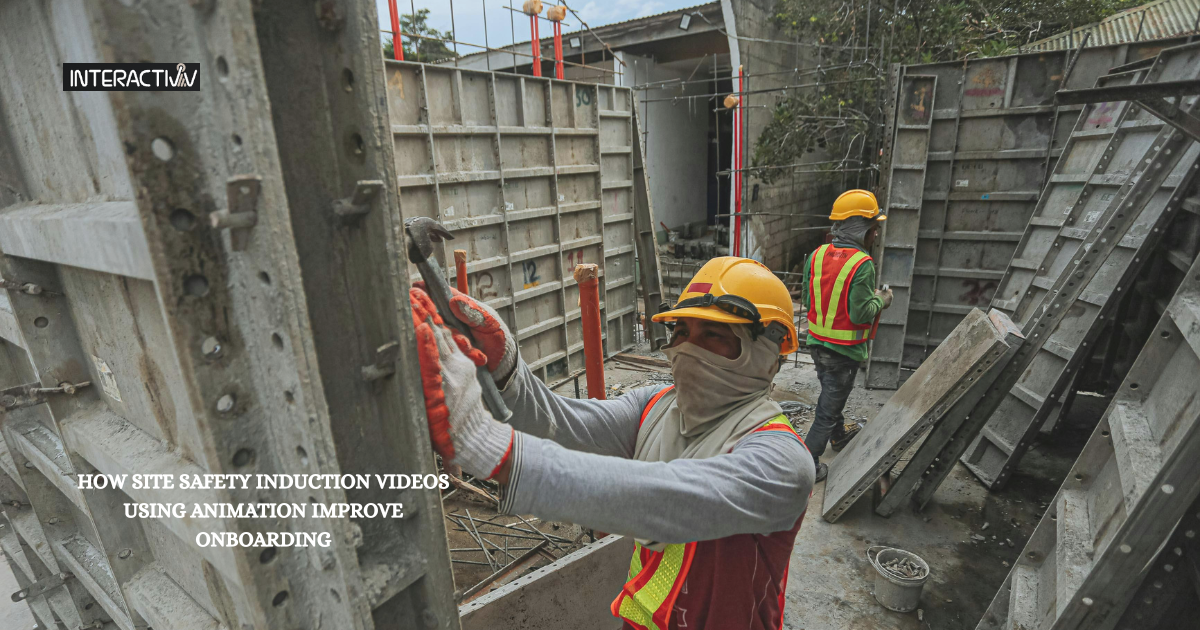Sep 25th, 2025

Safety is non-negotiable in high-risk environments such as construction sites, factories, and warehouses. Traditional safety inductions often rely on long manuals, PowerPoint presentations, or live sessions. These methods can be monotonous, hard to retain, and inconsistent. Enter animated safety induction videos—a modern, effective solution that transforms the onboarding experience.
In this blog, we’ll explore how animation in safety induction videos significantly enhances learning, engagement, and retention for new employees, and why it’s becoming the go-to method for workplace safety training in the modern age.
Site safety induction videos are a form of training used to introduce new employees or visitors to the hazards, protocols, and safety regulations specific to a workplace. These videos ensure that every individual understands how to navigate the environment safely.
Key Difference: Animation makes content more visually appealing, memorable, and easier to understand.
According to research by the Journal of Educational Psychology, people remember 65% of visual content after three days compared to only 10% of written content.
Animation can demonstrate intricate machinery, emergency procedures, or hazard simulations better than static diagrams or verbal explanations.
Through minimal text and strong visual cues, animation transcends language barriers—crucial for global or multilingual teams.
Animated videos deliver the same information every time, ensuring that no critical safety point is missed due to human error or presenter variation.
Modern animated videos often include clickable elements or embedded quizzes that improve engagement.
Some industries are combining animated safety videos with VR to provide a more immersive training experience.
Animated induction videos are now optimized for smartphones, making them accessible to remote or field employees.
The UK’s Health and Safety Executive (HSE) reported a 23% reduction in site incidents among companies that used animated induction videos.
Result: Improved worker understanding and safety compliance
Animated videos reduce training time by compressing complex safety information into digestible segments.
Once created, animated videos can be reused indefinitely, reducing the need for repeated live sessions.
Companies with multiple sites benefit from consistent training, reducing risk and liability.
Dynamic visuals, characters, and storytelling keep viewers interested, minimizing distractions.
With advances in technology and increasing demand for remote learning tools, animated videos will continue to evolve. Expect to see:
These features will make onboarding not just informative, but also interactive and insightful.
Yes, as long as they cover all mandatory safety guidelines and are supplemented with site-specific information.
Yes. With the rise of freelance platforms and affordable software, even startups can create high-quality videos within budget.
Ideally every 12–18 months or whenever major operational changes occur.
Popular tools include Vyond, Adobe After Effects, Powtoon, and Blender.
Animated site safety induction videos offer a dynamic, efficient, and engaging way to onboard employees. By replacing or supplementing traditional training methods with visually rich, consistent, and easy-to-understand content, companies not only improve safety compliance but also enhance the overall onboarding experience.
Adopting animation isn’t just a tech trend—it’s a strategic move toward a safer, smarter workplace.
External Link Reference Recap:
Safety is non-negotiable in high-risk environments such as construction sites, factories, and warehouses. Traditional safety inductions often rely on long manuals, PowerPoint presentations, or live sessions. These methods can be monotonous, hard to retain, and inconsistent. Enter animated safety induction videos—a modern, effective solution that transforms the onboarding experience. In this blog, we’ll explore how […]
Fill out the form below and we will send you a quote today…
Copyright © 2025 Interactivv.com. All rights reserved.